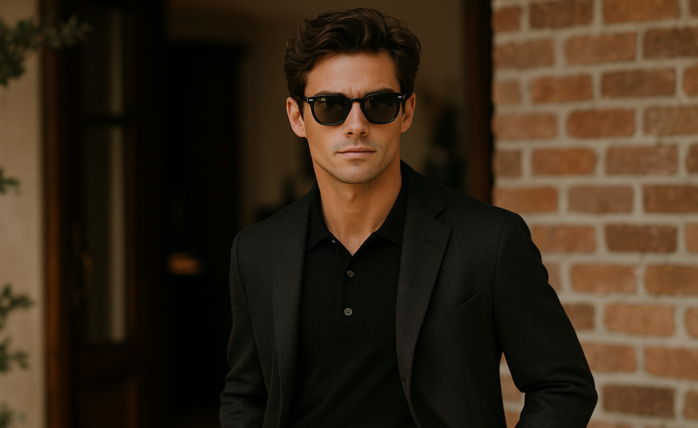Change Your Mindset
How to Use Small Wins to Build Momentum for Success
Little victories are incremental triumphs that get us closer to our ultimate objective

When it comes to defining and attaining objectives, many individuals prefer to focus on the broad picture – the desired outcome. While having a clear end goal in mind is essential, it may also be daunting and scary, particularly if the aim is exceptionally ambitious or complex.
This is where the notion of tiny victories comes into play. Little victories are incremental triumphs that get us closer to our ultimate objective. These minor achievements may appear inconsequential on their own, yet they may have a tremendous influence on our progress toward our objective.
Little victories are significant because they give us a sense of progress and momentum, which can be quite inspiring. When we realize that we are making progress, it strengthens our trust in our capacity to attain our objectives and gives us the confidence to keep going. When we feel stuck or stagnate, though, it is simple to become disheartened and lose motivation.
Little victories also assist in breaking down a bigger objective into more doable steps. When we look at a large objective as its whole, it can be intimidating and difficult to know where to begin. We may focus on each stage separately by breaking it down into smaller, more manageable steps, making the entire aim more feasible.
In this blog post, we’ll explore the power of small wins in more detail, including how to break down your goals into small steps, celebrate your achievements, track your progress, use small wins to build habits, and stay flexible in your approach. By the end of this post, you’ll have a better understanding of how to use small wins to build momentum and achieve your goals, no matter how big or small they may be.
Breaking Your Goal into Small Steps
Breaking down a big objective into tiny, attainable actions is essential for making progress and developing momentum toward that goal’s completion. But how exactly do you identify those small steps?
One approach is to start by brainstorming all the different tasks or actions that might be involved in achieving your larger goal. For example, if your goal is to run a marathon, some of the smaller steps might include:
- Setting a training schedule
- Purchasing proper running shoes and gear
- Running short distances to build endurance
- Incorporating strength training exercises to prevent injury
- Adjusting your diet to support your training
When you’ve explored all possible stages, prioritize them based on what would be most helpful in pushing you toward your objective. Some of the larger jobs may need to be broken down into smaller, more detailed phases. For example, the larger task of “setting a training schedule” might involve smaller steps like:
- Researching different marathon training programs
- Identifying a program that fits with your schedule and goals
- Printing out the schedule and posting it somewhere visible
- Setting reminders to ensure you stick to your training plan
While breaking down your aim into little pieces, keep in mind any potential hurdles or problems that may occur. For example, if your goal is to save money for a down payment on a house, some of the smaller steps might include:
- Creating a budget
- Reducing discretionary spending
- Setting up automatic savings contributions
- Researching potential homes and neighborhoods
Yet, it is also critical to address any potential obstacles, such as unexpected spending or changes in income. Anticipating these problems allows you to be better prepared to alter your strategy as needed and stay on track toward your objective.
In addition to the brainstorming and prioritizing approach, there are other strategies you can use to break down your goal into small steps.
Working backward from your ultimate aim is a successful method. Begin by visualizing your desired goal, and then outline the steps you’ll need to take to get there. For example, if you want to run a half marathon, see yourself crossing the finish line.
Then consider what you should do in the days and weeks leading up to the event, such as tapering your training, getting adequate rest, and correctly fuelling your body.
Working backward from there, determine the precise training runs you’ll need to accomplish, the lengths you’ll need to run, and any additional steps you’ll need to do along the way.
Another strategy is to group similar tasks. This can help you identify more efficient ways to work towards your goal. For example, if your goal is to start your own business, some of the smaller steps might include:
- Researching your target market
- Creating a business plan
- Registering your business
- Setting up a website
- Marketing your business
It’s also crucial to note that modest steps don’t have to be physical activities; they may instead be mental or emotional transformations. For example, if your goal is to improve your mental health, some of the smaller steps might include:
- Practicing mindfulness
- Setting boundaries with work and social obligations
- Prioritizing self-care
- Focusing on positive self-talk
These steps may not have a specific deadline or tangible action associated with them, but they can still make a big difference in helping you achieve your ultimate goal.
Finally, dividing your objective into little segments is all about figuring out what works best for you. You can determine the most effective measures to take you closer to your goal by trying different techniques and approaches. Remember, no step is too little – even the tiniest acts may help you gain momentum and get closer to your objective.
Using Small Wins to Build Habits
Small wins are not only powerful for achieving larger goals, but they can also be instrumental in establishing healthy habits. Forming a habit necessitates the repeated repeating of a behavior or activity over time. You may build a roadmap for establishing a new habit by breaking down your broader aim into little stages. Here’s how small wins can help establish healthy habits:
- Make it manageable: By focusing on a small win, you make it more manageable and achievable. This can help you build momentum toward your larger goal and establish a habit over time. For example, if your goal is to run a marathon, you can start by running for just 10 minutes a day. This small win will help you establish a running habit over time.
- Create a positive feedback loop: A tiny gain triggers a positive feedback loop, reinforcing the behavior and making it simpler to repeat in the future. This might help you form a habit over time. If you aim to eat healthier, for example, you might begin by replacing one bad snack with a healthier alternative each day. Every time you make this minor modification, you establish a positive feedback loop that reinforces the habit and makes it simpler to repeat in the future.
- Build confidence: A minor triumph may help boost confidence and self-efficacy, both of which are essential components of forming a new habit. When you score a minor victory, you demonstrate to yourself that you are capable of effecting positive change. This might help you gain confidence in your capacity to form a new habit over time.
- Create a sense of accomplishment: Achieving a small win creates a sense of accomplishment and pride. This might assist drive you to continue working toward your bigger goal and, over time, build a new habit. For example, if your objective is to meditate every day, you can begin by meditating for one minute every day. Every time you meditate, you feel a feeling of success, which drives you to keep meditating and develop a daily meditation habit.
Here are some examples of using small wins to build healthy habits:
- Exercise: If your goal is to exercise regularly, you can start by committing to just 10 minutes of exercise a day. This small win will help you establish an exercise habit over time.
- Healthy Eating: If your goal is to eat healthier, you can start by replacing one unhealthy snack with a healthier option each day. This small win will help you establish a healthy eating habits over time.
- Sleep: If your goal is to improve your sleep, you can start by setting a consistent bedtime each night. This small win will help you establish a healthy sleep habit over time.
- Mindfulness: If your goal is to practice mindfulness, you can start by meditating for just one minute a day. This small win will help you establish a mindfulness habit over time.
Understand that developing a new habit takes time and effort. You can create momentum toward your larger objective and form healthy habits that last by concentrating on tiny wins and enjoying each milestone along the way. Therefore, start small, be persistent, and have fun on your road to a healthier and happier self!
Life
10 Research-Backed Steps to Create Real Change This New Year
This New Year could finally be the one where you break old patterns and create real, lasting change.

Every New Year, we make plans and set goals, but often repeat old patterns. (more…)
Change Your Mindset
The Silent Skill That Makes People Respect You Instantly
What truly earns respect and why most people go about it the wrong way

Everybody craves respect but not everyone earns it. Some people believe that a title, years of experience, or a position of authority automatically entitles them to respect. (more…)
Change Your Mindset
How to Turn Your Mind Into Your Greatest Asset (Instead of Your Enemy)
The thoughts you feed your mind today quietly become the life you live tomorrow.

The human mind has two parts: the conscious mind and the subconscious mind. Both work together, but each has a very distinct role in shaping your life, decisions, habits, and results. (more…)
Did You Know
The Success Patterns You Inherited (And Didn’t Notice)
Your family history may hold the key to why you think, act, and feel the way you do today.

Who are you? Your experiences and your family’s narratives and legacies contribute to your identity. Your ancestry contains individual traits and forces that have been inherited over the years. It also carries the fights and victories of your forebears and older family members. (more…)
































